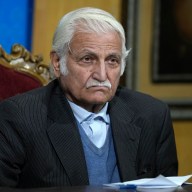‘‘Everyone has heard of a runner’s high, but how many people have heard of a capoeirista’s high?” asks Ana Costa, instructor and proprietor of Raízes do Brasil Capoeira Brooklyn, a Brazilian cultural center. “It is the exhilaration of an intense full-body workout.”
Capoeira is an Afro-Brazilian martial art in which practitioners, or capoeiristas, train their bodies and minds by using the dance-like sway of the body to learn self-defense. The physical, historical and communal traditions are not mutually exclusive.
What began in the 18th century as a way for slaves to combat oppression in the guise of a dance is recognized today in Brazil as a culturally preserved art form, and its popularity has spread globally. There are now capoeira groups and academies like Costa’s in virtually every major city in the United States, and they offer a camaraderie that no routine fitness class at your gym can.
Capoeira movements engage the core, upper and lower body all at once. In essence, the martial art is a conversation between two people who, regardless of their nationality, speak capoeira’s universal language of kicks, dodges, acrobatics and take-downs. This strategic call and response takes place in a circle of capoeiristas who sing, clap and play percussive instruments in order to energize the players as well as convey capoeira’s rich traditions through folkloric songs.
The sport thrives because it is a community in which discipline is a shared virtue. A formal cord system determines a student’s level of achievement, and to progress, capoeiristas are constantly challenged by their superiors and, most importantly, each other. “Human communication is intrinsically part of capoeira,” Costa says. “It keeps me connected with real people of all ages and all walks of life.”
















